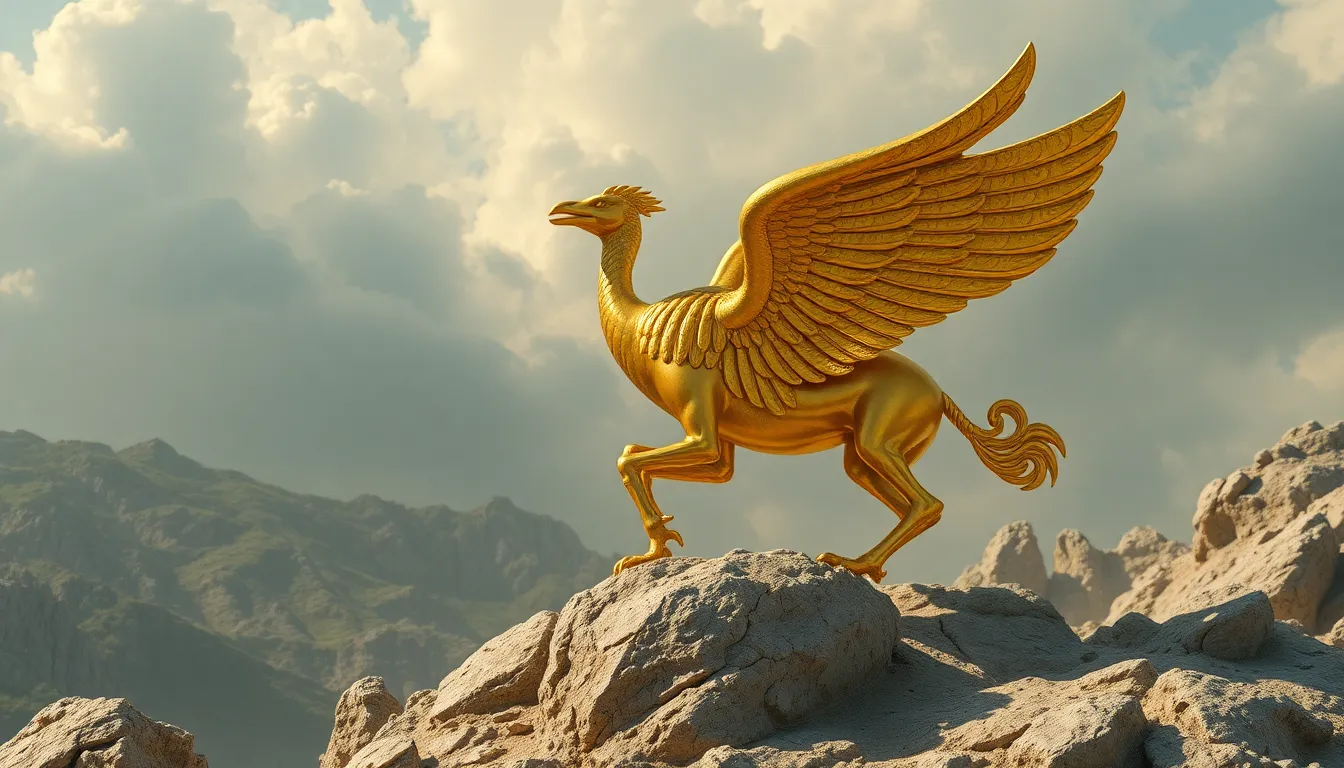The Golden Fleece: More Than Just a Mythical Tale
I. Introduction
The myth of the Golden Fleece is one of the most captivating stories in Greek mythology, encapsulating themes of adventure, heroism, and the relentless pursuit of glory. It tells the tale of Jason and his quest to retrieve the Fleece, a symbol of authority and kingship. This myth not only served as entertainment for the ancient Greeks but also held significant cultural importance, influencing their values and beliefs.
This article aims to delve into the deeper meanings and implications of the Golden Fleece myth, exploring its historical context, symbolism, cultural legacy, and psychological interpretations.
II. Historical Context of the Golden Fleece
The origins of the Golden Fleece myth can be traced back to ancient Greek folklore, where it was intertwined with tales of gods, heroes, and mythical creatures. The Fleece itself was said to be the skin of a golden ram, a gift from the god Hermes to the hero Phrixus, who sacrificed the animal to Zeus in gratitude for its salvation.
The story of the Fleece is closely connected to the Argonauts, a band of heroes led by Jason. Their legendary voyage aboard the ship Argo was marked by numerous trials, including encounters with harpies, clashing rocks, and the fearsome dragon that guarded the Fleece. This quest not only tested their courage and strength but also highlighted the importance of camaraderie and loyalty among the Argonauts.
In ancient Greek society, the quest for the Golden Fleece symbolized the pursuit of greatness and the ideals of heroism. It reflected the societal values of bravery, sacrifice, and the quest for knowledge and power.
III. Symbolism of the Golden Fleece
The Golden Fleece is rich in symbolism, representing various facets of power, authority, and human aspiration. Its allure is multifaceted:
- Representations of power and authority: The Fleece is often seen as a symbol of kingship and rightful rule. Possessing it conferred legitimacy and power, making it a coveted prize.
- Exploration of themes such as sacrifice and heroism: The quest for the Fleece involved significant sacrifices by Jason and his crew. Their journey exemplifies the hero’s journey, where trials and tribulations lead to personal growth and self-discovery.
- The Fleece as a metaphor for human aspirations and desires: The pursuit of the Golden Fleece can be viewed as a metaphor for the human quest for success, fulfillment, and the realization of one’s dreams.
IV. The Golden Fleece in Literature and Art
The Golden Fleece has been a prominent subject in various forms of literature and art throughout history. Its depictions include:
- Ancient texts and poetry: The myth has been recounted in works such as Apollonius of Rhodes’s “Argonautica,” which details the adventures of Jason and the Argonauts.
- Influence on Renaissance art and literature: The story inspired numerous artists and writers during the Renaissance, leading to masterpieces that captured the essence of the myth, such as paintings by Peter Paul Rubens.
- Modern adaptations and reinterpretations: The Golden Fleece continues to captivate contemporary audiences through films, novels, and television shows, often reimagining its themes for modern contexts.
V. Archaeological Discoveries Related to the Golden Fleece
Archaeological findings have shed light on the historical and cultural significance of the Golden Fleece myth:
- Evidence of ancient trade routes and gold mining: Discoveries of gold artifacts and mining sites in regions associated with the myth suggest that the story may be rooted in actual economic practices and trade.
- Artefacts linked to the myth: Various artefacts, such as coins and pottery, have been found that depict scenes related to the Golden Fleece, providing insight into its cultural relevance.
- The impact of these discoveries on our understanding of the myth: Archaeological evidence helps historians and scholars connect myth with reality, offering a glimpse into the lives and beliefs of ancient Greeks.
VI. The Golden Fleece and Its Cultural Legacy
The Golden Fleece has left an indelible mark on contemporary storytelling and culture:
- Influence on contemporary storytelling and media: The myth serves as a template for hero narratives in modern literature, films, and television, highlighting the timeless nature of its themes.
- The Fleece as a symbol in modern movements and ideologies: The pursuit of the Golden Fleece resonates with modern ideals of ambition, success, and the quest for personal and collective goals.
- Cross-cultural interpretations and variations of the myth: As the story has traveled through time and across cultures, it has been adapted and reinterpreted, reflecting diverse values and beliefs.
VII. The Psychological and Philosophical Interpretations
The Golden Fleece myth can also be analyzed through psychological and philosophical lenses:
- Joseph Campbell’s Hero’s Journey framework: The narrative aligns with Campbell’s archetypal hero’s journey, illustrating the stages of departure, initiation, and return.
- The Fleece as a representation of the quest for self-knowledge: The journey to obtain the Fleece symbolizes the inner quest for identity, purpose, and understanding of oneself.
- Archetypal analysis of characters in the myth: The characters within the myth, such as Jason, Medea, and the Argonauts, represent different aspects of human experience and struggle.
VIII. Conclusion
The myth of the Golden Fleece is a multifaceted tale that captures the imagination and reflects the complexities of human nature. Its significance extends beyond mere storytelling; it encompasses themes of power, sacrifice, aspiration, and the hero’s journey, resonating with audiences across generations.
As we reflect on the enduring relevance of the Golden Fleece in today’s world, we recognize its ability to inspire and provoke thought about our own quests for meaning and achievement. In blending mythology with reality, the Golden Fleece continues to remind us of the timeless human desire to strive for greatness.
https://www.youtube.com/watch?v=0_eXA2P0mzE




